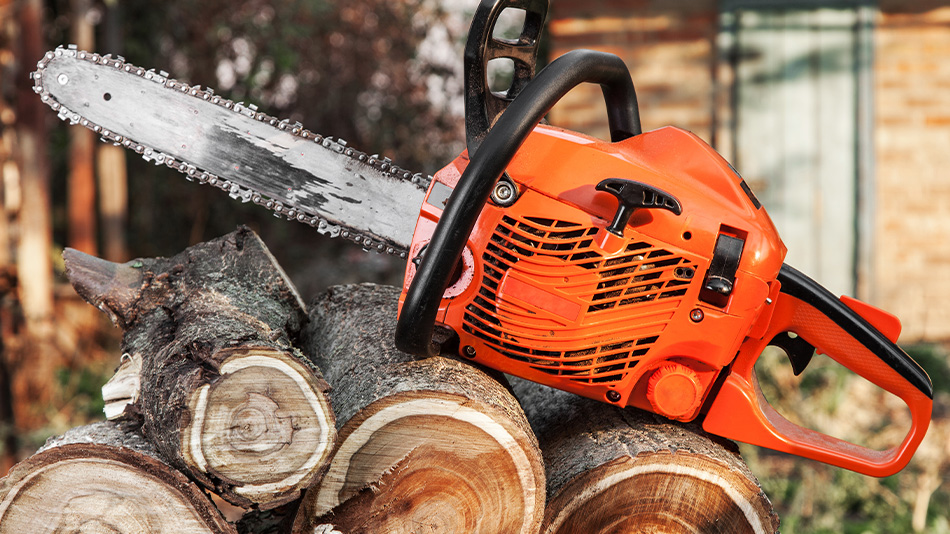If you own a home in New Jersey, you’ve probably wondered about the best timing for trimming the trees that add beauty, value, and shade to your property. Proper timing isn’t just about making your landscape look great—it supports tree health, reduces disease risk, and protects your home from damage during storms. Because New Jersey’s seasons, microclimates, and diverse tree species all play a role, knowing how and when to trim your trees is essential. Caring for your trees at the right time ensures a thriving, safe yard—while trimming at the wrong time can set you back with costly mistakes. Let’s examine the essential facts about tree trimming timing in New Jersey and how to make decisions that benefit your trees and property year after year.
What Is the Optimal Time of Year to Trim Trees in New Jersey?
Timing your tree trimming in New Jersey is crucial due to distinct seasonal patterns that impact tree health. Late winter—usually from February into early March—is considered the most effective period for tree pruning. This is when most trees are still dormant. Trimming during this dormant phase allows for faster healing, minimal sap loss, and a lower chance of disease or insect infestation during the forthcoming growing season. Additionally, without foliage, the branch structure is easier to assess, leading to better outcomes and safer jobs.
Some trees, especially spring-blooming species like dogwoods and cherries, require a slightly different approach. For these varieties, it’s best to wait until after they’ve finished flowering before trimming. This approach preserves this year’s blossoms while still guiding next season’s growth. On the other hand, large shade trees like oaks and maples are generally best trimmed near the end of winter or very early spring. This timing offers a balance between protecting tree health and ensuring the wounds heal before pests become active.
Extreme weather must also be considered. Avoid trimming during severe cold, snow, or ice since this can interfere with the natural wound-sealing process and increase risks for both you and the tree. After severe storms, if urgent action is needed to address hazardous branches, handle emergency trimming with care, but schedule routine maintenance for the recommended dormant periods.
How Does the Type of Tree Affect When You Should Trim in NJ?
New Jersey’s landscape features a range of tree types, each with its own trimming requirements. Oaks are particularly vulnerable to diseases like oak wilt, a fungus spread by beetles most active in warm months. For oaks, restrict pruning to the coldest months, from November through February, to limit this serious risk. Maples, another common NJ shade tree, can lose excessive sap (“bleed”) if cut too late in winter, so late winter to very early spring trimming is advised for reduced sap flow and healthier trees.
Flowering species, such as magnolias, cherries, and dogwoods, develop their buds for the next flowering season soon after blooming. If you trim these trees before flowering, you risk losing much of next year’s display. Wait until just after the blossoming period before pruning. Fruit trees (like apple, pear, and peach), on the other hand, should be pruned during late winter before buds swell. This approach promotes robust fruiting and balanced, manageable structure.
Evergreens—such as pine and spruce—are less tolerant of heavy annual pruning. They benefit most from selective trimming, focused on removing dead, diseased, or damaged branches. For shaping evergreens, aim for the candle stage (when the new shoots are still soft) in late spring, but avoid aggressive late-season cuts. This species-specific approach to timing supports thriving, attractive trees across your landscape.
How Do Weather & Climate Variability in NJ Impact Tree Trimming Schedules?
New Jersey’s unpredictable weather and significant climate variation from north to south can complicate traditional timing guidelines for tree trimming. Late frosts, early thaws, or unusual spells of drought all affect when it is safest and most effective to trim. For example, an unusually warm February can cause dormant buds to break early; trimming before a late frost could leave new growth vulnerable to damage.
Extended drought can place trees under additional stress, making them more vulnerable to the effects of pruning. If New Jersey experiences a dry season, resist the urge to conduct heavy trimming—removing too much foliage when a tree is already struggling for water can slow recovery. Conversely, a wet, mild winter might favor the spread of fungal disease, so tackling required trimming jobs during true dormancy can help prevent infection and speed wound closure.
It’s also important to recognize that timing can vary by microclimate. New Jersey’s plant hardiness zones (6a to 7b) mean southern counties often see earlier springs while northern regions remain colder longer. Be mindful of your local climate patterns when planning your trim, or consult a knowledgeable local provider who can offer weather-smart advice for your property.
Can Trimming Trees at the Wrong Time Cause Damage or Disease?
Poorly timed trimming can have lasting negative consequences beyond simple appearance. Cutting during active growth seasons—mid to late spring into early summer—can encourage the entry of pests and infections, as wounds heal more slowly and attract insects. For certain trees, including oaks, this opens the door to potentially fatal diseases like oak wilt, which spreads rapidly through open wounds during the beetle-active months.
Excessive sap loss or “bleeding,” especially in maples and birches, is common when trees are pruned outside late winter. This may not always kill the tree but can stress it enough to encourage further decline or poor growth next season. For fruiting and ornamental trees, trimming during bud set or just before flowering can result in diminished blooms or harvests—a frustrating result for anyone hoping to enjoy their yard’s full potential.
Additionally, mistimed or overly aggressive cuts often cause flushes of weak, poorly anchored growth later in the year. These soft new shoots may not harden in time for winter and can break under snow, ice, or strong winds, raising maintenance costs and increasing risk to people and property nearby. Careful, species-specific scheduling prevents these issues and supports resilient, healthy trees year-round.
What Are the Visual & Safety Benefits of Properly Timed Tree Trimming?
Trimming at the right time delivers a blend of visual impact and practical safety benefits for your home. Removing dead or weak limbs in the dormant season means hazards are addressed before spring storms or heavy summer foliage increases risk. This protects buildings, vehicles, and pathways from falling branches, especially when New Jersey’s unpredictable storms hit.
When timed correctly, pruning encourages healthy, vigorous growth as spring arrives, leading to fuller canopies, abundant blossoms, or better fruit yields. Your yard will look neater, brighter, and more cared-for, which is important for both daily enjoyment and when you want to impress visitors or potential buyers. Targeted, strategic cuts help shape trees for structural integrity, reducing the long-term risk of splitting or storm failure.
Properly timed pruning also improves sunlight penetration and air circulation throughout your landscape. This discourages mold, increases lawn health, and supports robust flower and vegetable beds. Benefits add up whether you’re focused on visual appeal, comfort, or reducing hazards over the course of each year’s growing cycle.
Are There New Jersey Laws & Local Ordinances Governing Tree Trimming?
Tree trimming in New Jersey is governed by a mix of state, county, and municipal rules, along with homeowners association (HOA) guidelines in many communities. For trees growing in a public right-of-way—along streets or near sidewalks—a permit may be required before any branch removal or pruning. Some towns place seasonal restrictions on trimming to protect bird nests or reduce the spread of disease during certain months.
Pruning street trees or those in historic or protected areas often requires prior notification of or approval from your local shade tree commission or forestry department. Certain native or landmark species may have additional protection, and unauthorized work may result in fines. Always check with your municipality and review any relevant HOA documents before planning major trimming projects.
Professional tree services such as Giron's Tree Service know the ins & outs of these requirements across New Jersey. Working with a knowledgeable provider helps you meet all legal obligations while maintaining safe, attractive trees that enhance your neighborhood.
When Should You Hire a Professional Tree Service Versus Handling It Yourself?
Some minor trimming jobs—like removing small, low branches from young trees—are safe for homeowners with proper tools and knowledge. But as the scope or risk increases, so does the need for professional support. If trees are tall, limbs are heavy, work is near power lines, or there’s evidence of disease or decay, bringing in an experienced team is the best way to protect yourself and your property.
Tree professionals have the proper safety gear, climbing equipment, and advanced tools to manage difficult jobs efficiently. They also have the training needed to assess structural weaknesses and comply with regional regulations about tree protection or wildlife. If you’re unsure about the legality or safety of a project—or if there are questions about the long-term health of your tree—a professional tree service can provide an accurate diagnosis and recommend precise timing and method for any cuts needed.
Choosing a skilled New Jersey provider such as Giron's Tree Service offers peace of mind that your tree trimming will follow local laws, support tree health, and minimize risk. With familiarity in local ordinances and weather patterns, they create maintenance plans that keep properties safe, attractive, & compliant across all seasons.
What Common Mistakes Should New Jersey Homeowners Avoid With Tree Trimming Timing?
Avoiding common errors is key to successful tree care in New Jersey. Topping—a practice of removing most of a tree’s top growth—leaves trees vulnerable to disease, decay, and storm damage. Over-pruning, especially more than 25% of the canopy in a single season, weakens even hardy varieties and can trigger uncontrolled, weak regrowth.
Using dull, unsanitized tools is another risk, as it can spread disease from tree to tree. Trimming during active growth, right before bud burst, or when disease pressure is high increases the chances of tree decline and pest invasion. Ignoring your town or HOA’s regulations regarding trees near sidewalks or shared spaces can also lead to conflicts and costly fines.
To prevent these issues:
- Research species-specific trimming periods before beginning work
- Invest in sharp, disinfected pruning tools
- Limit removal to less than one-quarter of the canopy per year
- Plan around weather & local ordinances
- Consult with a trusted New Jersey provider when the situation is unclear
Learning from these common mistakes helps keep trees healthy and ensures long-term value for your property.
Proper tree trimming timing in New Jersey is more than just an item on your to-do list—it’s an investment in the health, safety, and appearance of your landscape. When you plan around your trees’ unique needs and the rhythms of the local climate, you create an environment that thrives in every season. If you want a knowledgeable partner to help assess, plan, and care for your trees, reach out to Giron's Tree Service at (908) 529-0093—and enjoy the peace of mind that comes from knowing your property is in good hands.


